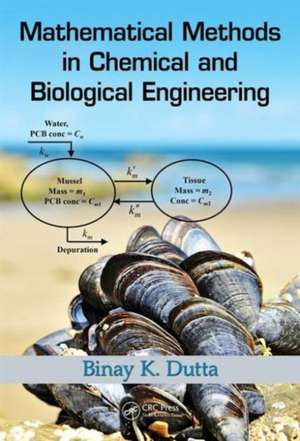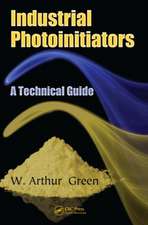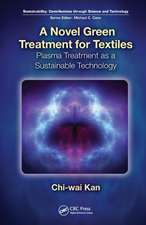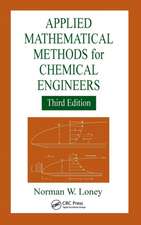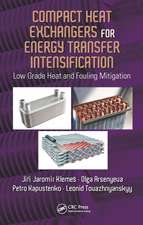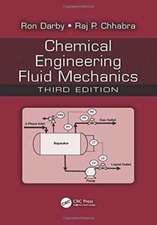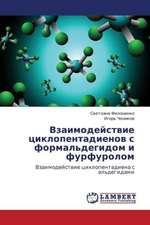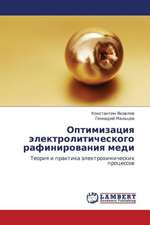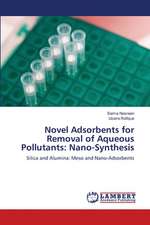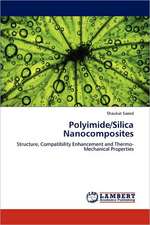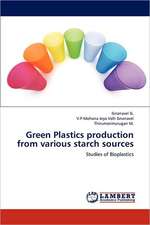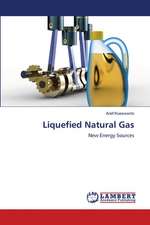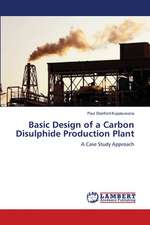Mathematical Methods in Chemical and Biological Engineering
Autor Binay Kanti Duttaen Limba Engleză Hardback – 20 oct 2016
| Toate formatele și edițiile | Preț | Express |
|---|---|---|
| Paperback (1) | 491.99 lei 6-8 săpt. | |
| CRC Press – 18 dec 2020 | 491.99 lei 6-8 săpt. | |
| Hardback (1) | 705.46 lei 6-8 săpt. | |
| CRC Press – 20 oct 2016 | 705.46 lei 6-8 săpt. |
Preț: 705.46 lei
Preț vechi: 928.89 lei
-24% Nou
Puncte Express: 1058
Preț estimativ în valută:
135.01€ • 140.43$ • 111.46£
135.01€ • 140.43$ • 111.46£
Carte tipărită la comandă
Livrare economică 14-28 aprilie
Preluare comenzi: 021 569.72.76
Specificații
ISBN-13: 9781482210385
ISBN-10: 148221038X
Pagini: 718
Ilustrații: 202
Dimensiuni: 178 x 254 x 43 mm
Greutate: 1.83 kg
Ediția:1
Editura: CRC Press
Colecția CRC Press
ISBN-10: 148221038X
Pagini: 718
Ilustrații: 202
Dimensiuni: 178 x 254 x 43 mm
Greutate: 1.83 kg
Ediția:1
Editura: CRC Press
Colecția CRC Press
Cuprins
Architecture of Mathematical Models. Ordinary Differential Equations and Applications. Special Functions and Solutions of Ordinary Differential Equations with Variable Coefficients. Partial Differential Equations. Integral Transforms. Approximate Methods of Solution of Model Equations. Answers to Selected Exercise Problems. Appendices.
Notă biografică
Binay Kanti Dutta is a former chairman of the West Bengal Pollution Control Board, Kolkata, India. He has been involved in research and teaching in chemical engineering since 1970. He has taught at the Regional Engineering College (now the National Institute of Technology), Durgapur, India; the University of Calcutta, Kolkata, India; the University of Alberta, Edmonton, Canada; the Universiti Teknologi Petronas, Perak, Malaysia; and the Petroleum Institute, Abu Dhabi, United Arab Emirates. He has also worked as a visiting scientist at the National Institute of Standards and Technology, Boulder, Colorado, USA; the Stevens Institute of Technology, Hoboken, New Jersey, USA; and the Environmental Protection Agency, Cincinnati, Ohio, USA. He is a former head of the Chemical Engineering Department and a former director of the Academic Staff College at the University of Calcutta. Professor Dutta has published extensively on transport processes, mathematical modeling, membranes separation, reaction engineering, and environmental engineering, and holds a number of US, European, and Malaysian patents. He is the author of Heat Transfer—Principles and Applications and Principles of Mass Transfer and Separation Processes. He also served as the 2005 president of the Indian Institute of Chemical Engineers.
Recenzii
"… gives both professionals and the less experienced a variety and a hierarchy of useful tools that should enable all users to make wise choices faster."
—From the Foreword by Edward L. Cussler Jr., Distinguished Institute Professor, University of Minnesota, Minneapolis, USA, and Past President, American Institute of Chemical Engineers
"This book will excite [both students and] researchers in chemical, environmental, and biological engineering fields to appreciate the power of mathematical modeling. … a landmark book due to the diverse examples of daily life as well as practical engineering problems."
—Ajay K. Ray, Professor and Chair, Western University, London, Ontario, Canada
—From the Foreword by Edward L. Cussler Jr., Distinguished Institute Professor, University of Minnesota, Minneapolis, USA, and Past President, American Institute of Chemical Engineers
"This book will excite [both students and] researchers in chemical, environmental, and biological engineering fields to appreciate the power of mathematical modeling. … a landmark book due to the diverse examples of daily life as well as practical engineering problems."
—Ajay K. Ray, Professor and Chair, Western University, London, Ontario, Canada
Descriere
This book describes basic to moderately advanced mathematical techniques useful for shaping the model-based analysis of chemical and biological engineering systems. Covering an ideal balance of basic mathematical principles and applications to physico-chemical problems, the text presents examples drawn from recent literature on chemical engineering, biological and biomedical engineering, food processing, and a variety of diffusional problems to demonstrate the real-world value of the mathematical methods. Emphasis is placed on the background and physical understanding of the problems to prepare students for future challenging and innovative applications.
